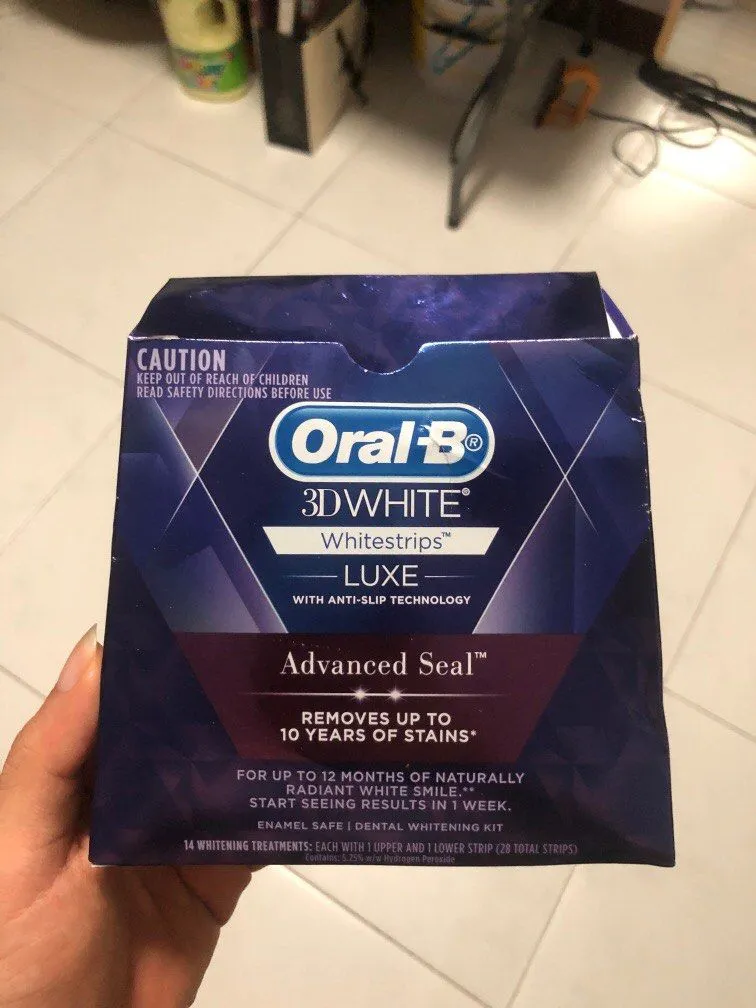What are Oral-B Whitening Strips?
Oral-B whitening strips are a popular and convenient over-the-counter teeth whitening solution designed to help you achieve a brighter, more radiant smile. These flexible, thin strips are coated with a whitening agent, typically hydrogen peroxide, and are applied directly to your teeth. They adhere to the surface of the teeth, delivering the whitening formula for a specific period, as indicated by the product instructions. Unlike some other whitening methods, such as professional treatments or custom trays, Oral-B strips are designed for easy at-home use, making them a convenient option for those looking to improve the appearance of their teeth. The appeal of these strips lies in their simplicity and accessibility, providing a way to gradually whiten teeth in the comfort of your own home, without the need for complex procedures or expensive appointments. This accessibility has contributed to their widespread popularity among individuals seeking a more confident smile.
How Oral-B Whitening Strips Work
Oral-B whitening strips work through a chemical process that targets and breaks down stains and discoloration on the surface of your teeth. The active ingredient, usually hydrogen peroxide, penetrates the enamel and dentin, the layers that make up your teeth. When the hydrogen peroxide comes into contact with the staining molecules, it triggers an oxidation reaction. This reaction breaks down the stain molecules into smaller, less noticeable components. The process effectively lightens the appearance of the teeth without causing permanent structural changes. The effectiveness of the strips depends on the concentration of the whitening agent, the duration of application, and the frequency of use, all of which are factors detailed in the product instructions. Regular use, as directed, is crucial to achieving the desired results and maintaining a brighter smile over time. Understanding this mechanism can help users appreciate the scientific basis of teeth whitening and ensure they use the product correctly for optimal results.
The Science Behind Whitening
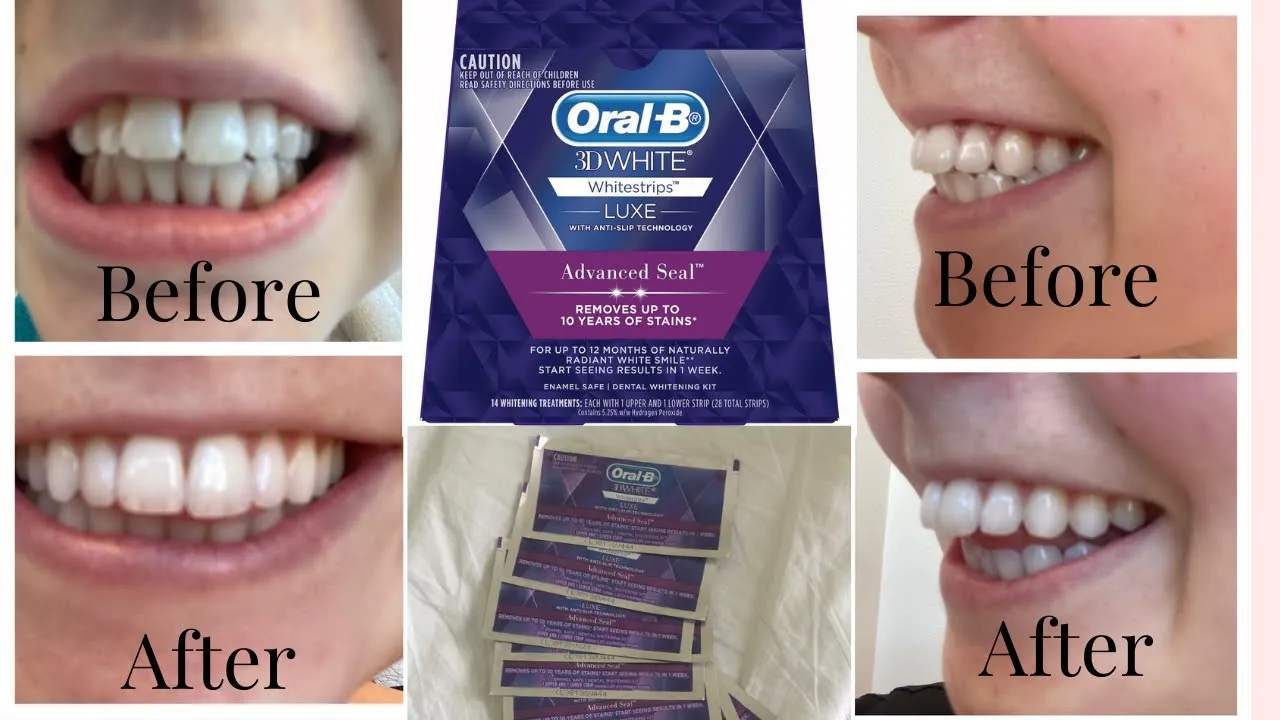
The science behind teeth whitening with products like Oral-B strips revolves around the oxidation-reduction reactions that occur within the tooth enamel. Stains on teeth are often caused by organic compounds from food, drinks (like coffee, tea, and red wine), and tobacco. These compounds accumulate over time, leading to discoloration. Whitening agents, such as hydrogen peroxide or carbamide peroxide, act as oxidizing agents. They release oxygen molecules that penetrate the enamel and break down the large, complex stain molecules into smaller, colorless ones. The process doesn’t change the tooth’s structure but rather removes the molecules responsible for the discoloration. The effectiveness depends on factors such as the concentration of the whitening agent, the duration of exposure, and the condition of the teeth. The process is generally safe, but it can sometimes cause temporary sensitivity due to the interaction of the whitening agents with the dentin, the layer beneath the enamel. This scientific understanding allows users to appreciate the effectiveness of whitening strips while also being aware of potential side effects.
Key Ingredients in Oral-B Strips
The primary active ingredient in Oral-B whitening strips is typically hydrogen peroxide. This chemical compound is a powerful oxidizing agent that is essential for the whitening process. The concentration of hydrogen peroxide can vary between different Oral-B strip products, with higher concentrations often leading to faster results. Apart from the active whitening agent, the strips also contain other inactive ingredients that play crucial roles in their function. These include polymers and adhesives that allow the strip to adhere to the teeth and remain in place during the treatment period. Flavoring agents are also present to improve the taste of the strips, making the application more comfortable. Additionally, some strips may contain ingredients designed to protect the enamel or reduce tooth sensitivity. Understanding the composition of Oral-B strips helps consumers make informed choices and manage expectations regarding the product’s performance and any potential side effects.
Step-by-Step Application Guide
Using Oral-B whitening strips effectively requires following a specific procedure. The first step involves preparing your teeth by brushing gently to remove surface debris. Before application, ensure your teeth are dry, as this helps the strips adhere better. Peel the strip from its backing. Apply the longer strip to your upper teeth and the shorter strip to your lower teeth, aligning them with your gumline. Gently press the strips to the front of your teeth, ensuring good contact. Fold the excess strip material behind your teeth to secure it in place. Leave the strips on for the time recommended by the product instructions, usually ranging from 30 minutes to an hour. Once the time is up, carefully peel off the strips and discard them. Rinse your mouth with water to remove any remaining gel. Consistent adherence to this step-by-step guide will help maximize the effectiveness of the whitening strips and ensure a safer, more comfortable experience.
Preparing Your Teeth for Strips
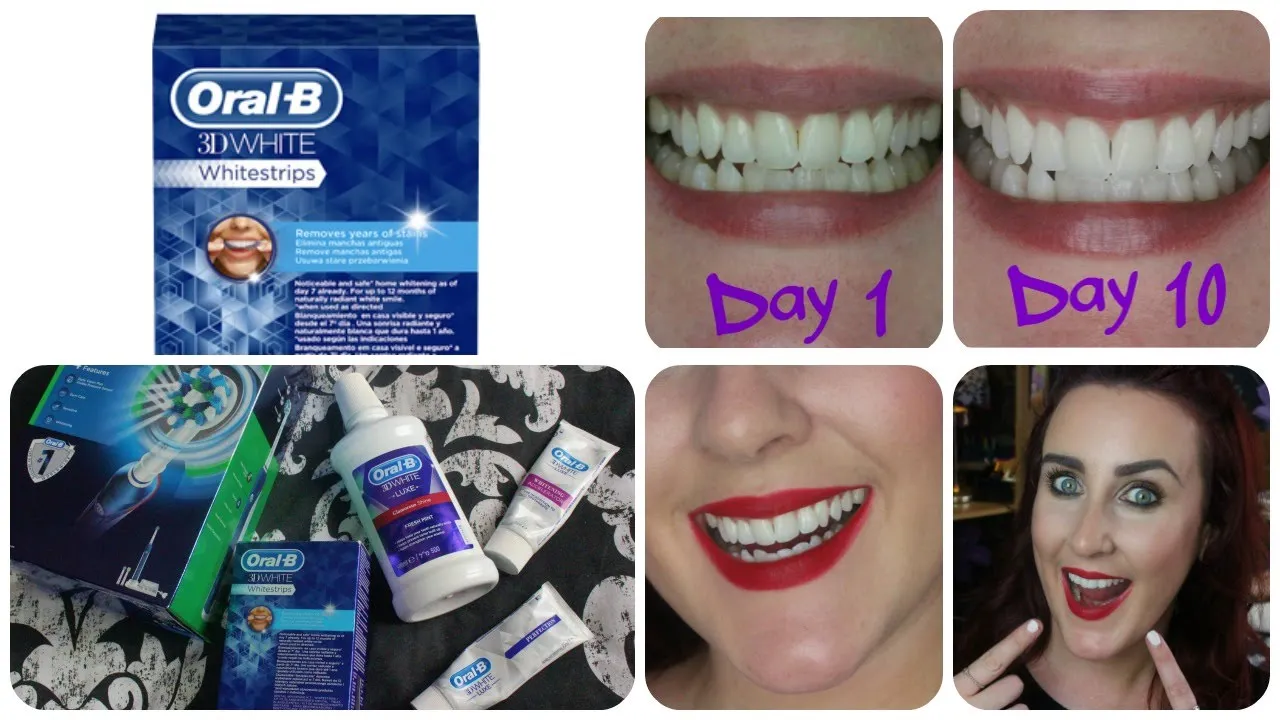
Before applying Oral-B whitening strips, it’s essential to prepare your teeth to maximize the effectiveness of the treatment. Start by gently brushing your teeth to remove any plaque and food particles. Avoid using abrasive toothpastes, as they could cause irritation or sensitivity. Flossing before brushing can also help remove debris from between your teeth, allowing the whitening agent to better reach the entire surface. After brushing and flossing, rinse your mouth with water to remove any remaining toothpaste or debris. Ensure that your teeth are dry before applying the strips. Using a soft cloth or a tissue to dry your teeth can help the strips adhere properly and improve contact with the tooth surface. Proper preparation ensures that the whitening agent can effectively target the stains and discoloration for a more consistent result. This preliminary process can also enhance your overall experience with the whitening strips and minimize the chances of any discomfort or side effects.
Applying the Strips Correctly
Correct application is crucial for achieving the desired whitening results with Oral-B strips. Begin by carefully peeling the strips from their protective backing. The product usually comes with two strips, one longer for the upper teeth and a shorter one for the lower teeth. Apply the longer strip to the upper teeth and the shorter strip to the lower teeth. Align the strips along your gumline, pressing them gently to make sure they adhere firmly. It is important to ensure that the strips make good contact with the front surfaces of your teeth. Once the strips are in place, fold any excess material behind your teeth to secure them. Ensure the strips are not overlapping on the gums, as this can cause irritation. The strips should remain in place for the duration specified in the product instructions. After the specified time, carefully remove the strips and discard them. Proper application ensures that the whitening agent covers the entire surface of your teeth and works effectively to reduce stains.
Aftercare Tips for Maximum Results
After using Oral-B whitening strips, proper aftercare can significantly enhance the results and maintain a brighter smile. Avoid consuming foods and drinks that can stain your teeth, such as coffee, tea, red wine, and heavily pigmented sauces, immediately after treatment and during the whitening period. Maintain good oral hygiene by brushing and flossing regularly to remove any new surface stains and plaque. Use a soft-bristled toothbrush and fluoride toothpaste. Consider using a whitening toothpaste to help maintain your results. Rinse your mouth with water or a fluoride mouthwash after brushing and flossing to protect your teeth and gums. Avoid smoking and other tobacco products, as they can significantly stain your teeth. It’s also important to schedule regular dental check-ups and cleanings to monitor your oral health and ensure your teeth stay healthy and bright. By implementing these aftercare tips, you can prolong the effects of the whitening strips and keep your smile looking its best.
Potential Side Effects and How to Manage Them
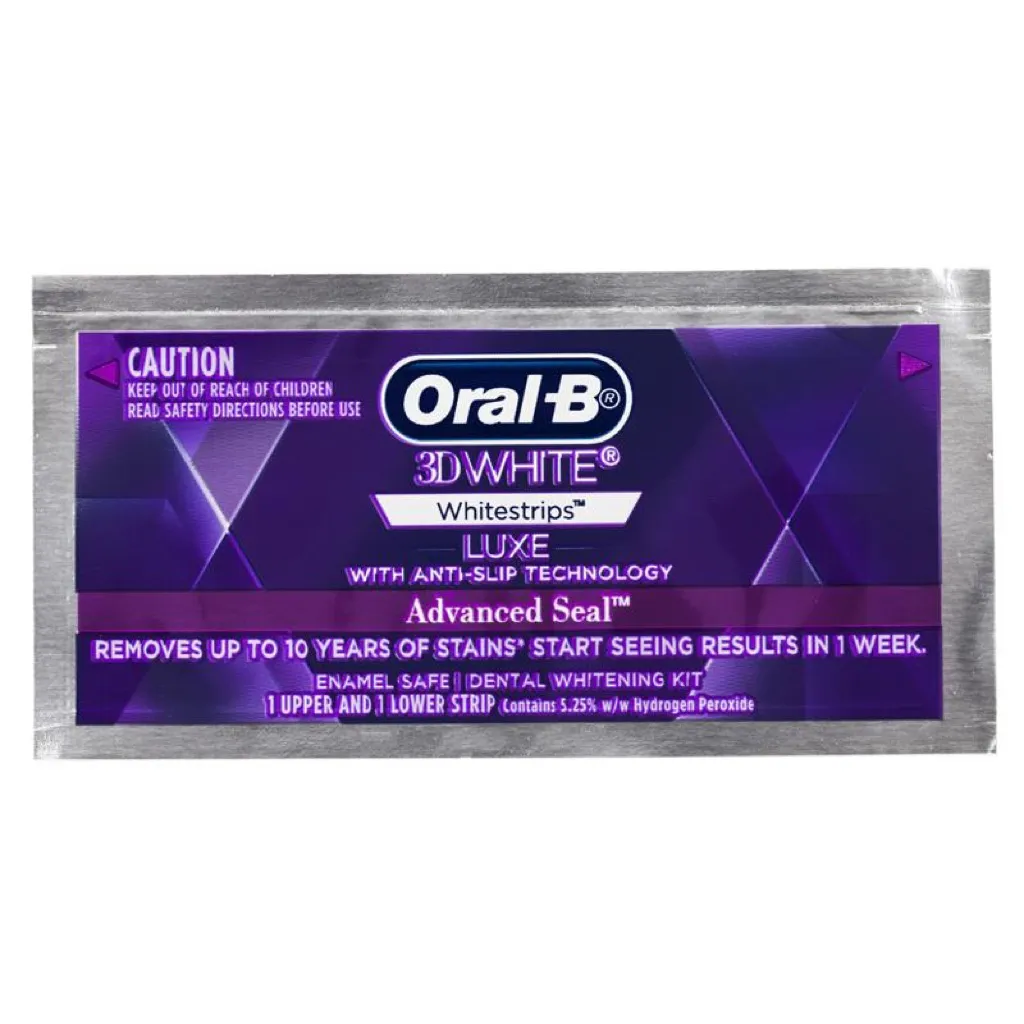
While Oral-B whitening strips are generally safe, some users may experience potential side effects. The most common side effect is tooth sensitivity, which can manifest as a sharp, sudden pain in your teeth when exposed to hot or cold temperatures. Gum irritation, characterized by redness, swelling, or discomfort in the gums, is another possible side effect. Fortunately, these side effects are usually temporary and can be managed. To manage tooth sensitivity, use a toothpaste designed for sensitive teeth, containing ingredients like potassium nitrate. You can also reduce the duration or frequency of the whitening treatments. If you experience gum irritation, avoid getting the whitening gel directly on your gums by properly applying the strips. Rinsing your mouth with water after removing the strips can also help. If the side effects persist or worsen, it’s important to consult your dentist. Understanding and managing these potential side effects ensures a comfortable and successful whitening experience.
Sensitivity and Discomfort
Tooth sensitivity is a common side effect of teeth whitening treatments, including Oral-B whitening strips. This sensitivity arises because the whitening agent, typically hydrogen peroxide, can temporarily make your teeth more porous, allowing the whitening agent to reach the nerves within your teeth. Symptoms can range from mild discomfort to a sharp, shooting pain when consuming cold or hot foods and drinks. To minimize sensitivity, use a toothpaste specifically designed for sensitive teeth, which often contains ingredients like potassium nitrate that help to block nerve signals. Consider taking breaks between whitening treatments to allow your teeth to recover. Apply the strips for a shorter duration if sensitivity becomes too intense. If sensitivity persists or is severe, consult your dentist. They might recommend additional treatments, such as fluoride treatments, to strengthen your enamel and reduce discomfort. Careful management and prompt action can ensure that sensitivity does not hinder your ability to achieve a brighter smile.
Gum Irritation
Gum irritation is another potential side effect that can occur when using Oral-B whitening strips. This irritation is often caused by the whitening gel coming into contact with the gum tissue. Symptoms of gum irritation include redness, swelling, and discomfort in the gums. To prevent gum irritation, ensure that the strips are properly applied, aligning them carefully along your teeth, avoiding contact with the gums. Avoid overlapping the strips onto the gumline. If you experience gum irritation, rinse your mouth thoroughly with water after removing the strips. You can also use a gentle mouthwash to soothe your gums. Avoid aggressive brushing or flossing, as this can further irritate the sensitive gum tissue. If the irritation persists or worsens, consult your dentist. They can assess the situation and provide recommendations, such as a fluoride treatment to help soothe the gums. Proper application and immediate care can minimize and resolve gum irritation, ensuring a comfortable whitening experience.
Comparing Oral-B Strips with Other Whitening Methods
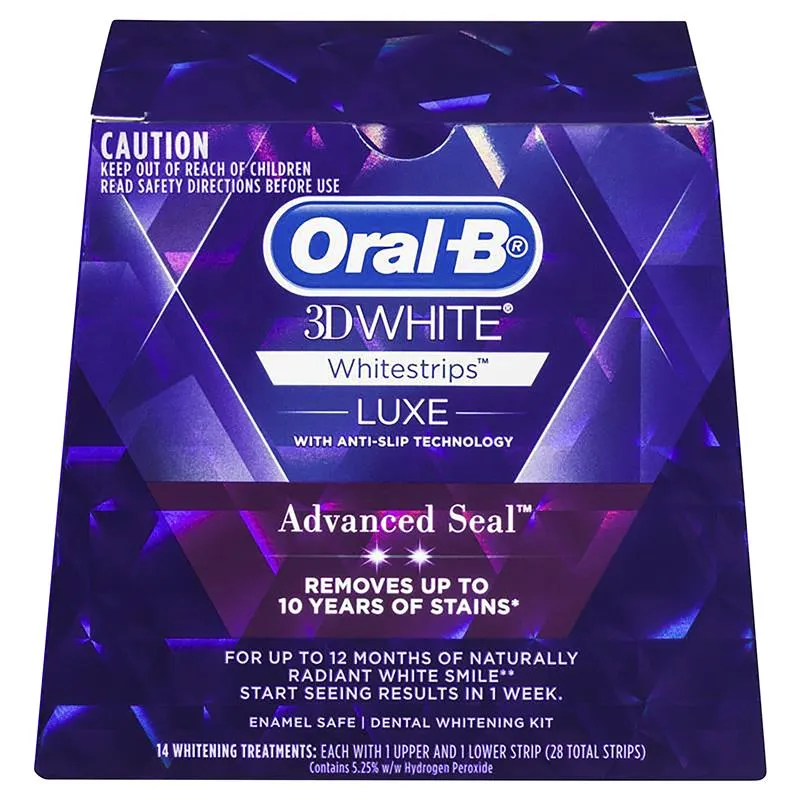
When considering teeth whitening options, it’s important to compare Oral-B whitening strips with other methods available. There are several alternatives, each with its own advantages and disadvantages. Professional whitening treatments, performed by a dentist, often involve stronger whitening agents and can produce faster and more dramatic results. However, these treatments are typically more expensive and require visits to the dentist. Over-the-counter whitening toothpastes and mouthwashes are another option, offering a gentler approach to teeth whitening that may be suitable for maintaining a brighter smile. These products are often less expensive but usually have a slower whitening effect. Custom whitening trays, prescribed by a dentist, involve using custom-fitted trays to apply a whitening gel at home. These trays offer more precise application and can be more effective than strips, but also require a visit to the dentist and more time to apply. The best method for you depends on your individual needs, the level of whitening you desire, your budget, and your oral health. Consulting with your dentist can help determine the most appropriate option for you.
Oral-B vs. Professional Whitening
Comparing Oral-B whitening strips to professional whitening treatments highlights significant differences in effectiveness, cost, and convenience. Professional whitening, performed by a dentist, often utilizes higher concentrations of hydrogen peroxide or other whitening agents, resulting in faster and more dramatic results. The treatments can also be tailored to the individual’s needs, ensuring a more even whitening effect. Professional whitening is typically more expensive than Oral-B strips and requires appointments with a dentist. It may involve multiple sessions to achieve the desired results. Oral-B whitening strips, on the other hand, are more affordable and offer the convenience of at-home use. However, the whitening effect may be less pronounced, and it can take longer to achieve the desired results. While strips are a good option for those seeking a convenient and affordable teeth whitening method, professional whitening remains a superior choice for individuals seeking more significant and rapid results. The choice depends on the individual’s priorities, budget, and desired outcome. Consulting with a dentist can help determine the best option.
Oral-B vs. Whitening Toothpastes
Comparing Oral-B whitening strips with whitening toothpastes reveals significant differences in their mechanisms of action and their effectiveness. Whitening toothpastes typically contain mild abrasives or chemical agents that remove surface stains from the teeth. They are designed to help maintain whiteness and prevent new stains from forming. These toothpastes generally have a slower whitening effect compared to Oral-B strips, which use higher concentrations of hydrogen peroxide or other bleaching agents to penetrate the enamel and lighten the teeth from within. Whitening toothpastes are a more affordable and accessible option, suitable for daily use and maintaining a brighter smile. Oral-B whitening strips are a more concentrated treatment that can provide more visible results in a shorter amount of time. However, strips usually involve a more intensive treatment regimen with a specific application process. Both methods can be part of an effective teeth-whitening routine, with whitening toothpastes offering a supplementary approach to sustaining the effects achieved through the use of whitening strips. The choice depends on the individual’s needs, the desired level of whitening, and their commitment to following a more rigorous treatment process.
Maximizing the Effectiveness of Oral-B Strips
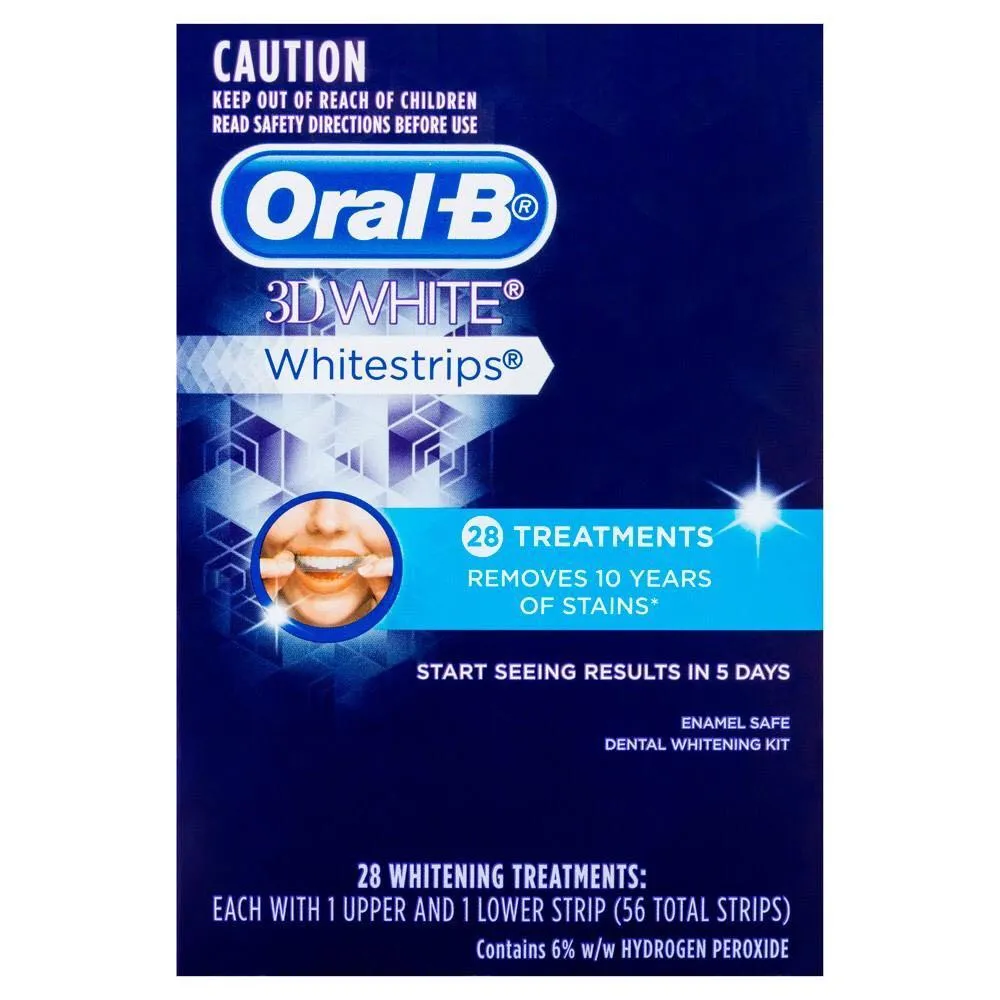
To maximize the effectiveness of Oral-B whitening strips, several factors should be considered. First, it is essential to follow the product instructions carefully. This includes the recommended duration of application and the frequency of use. Consistent and proper use, as directed, is crucial to achieving the desired results. Preparing your teeth before applying the strips is also important. Brush and floss your teeth gently to remove any surface debris. Make sure your teeth are dry before application, which helps the strips adhere correctly and maximize the effectiveness of the whitening agent. Avoiding foods and drinks that cause stains, such as coffee, tea, red wine, and berries, during the whitening treatment can prevent new stains from forming. Maintaining good oral hygiene, including regular brushing and flossing, is essential to keeping your teeth white. Consider using a whitening toothpaste or mouthwash to help maintain your bright smile. Consistent use of the product along with proper oral hygiene will yield the best results. Consulting with a dentist can provide further personalized advice and ensure the treatment is appropriate for your dental health.
Maintaining Your Bright Smile
Maintaining a bright smile after using Oral-B whitening strips requires a consistent approach to oral hygiene and lifestyle choices. Continue to practice good oral hygiene habits, including brushing your teeth twice a day with a fluoride toothpaste and flossing daily. Consider using a whitening toothpaste to help maintain the brightness achieved from the strips. Regular dental check-ups and cleanings are essential to monitor your oral health and remove any surface stains that may have accumulated. Avoid or limit the consumption of foods and drinks that stain your teeth, like coffee, tea, red wine, and berries. If you consume these items, rinse your mouth with water immediately afterward to minimize staining. Consider using a straw for beverages that can cause stains, to limit their contact with your teeth. Avoid smoking and other tobacco products, as they can cause significant discoloration. Follow these practices to maintain your brighter smile long after completing your whitening treatment. Your consistent efforts will contribute to a lasting, confident smile.
Dietary Considerations
Dietary considerations play a crucial role in maintaining a bright smile after using Oral-B whitening strips. Certain foods and beverages are known to stain teeth and can reverse the whitening effects. Minimize the consumption of dark-colored beverages such as coffee, tea, and red wine, as these contain pigments that easily adhere to the teeth’s surface. Limit the intake of highly pigmented foods like berries, soy sauce, and tomato-based sauces, which can also contribute to staining. If you choose to consume these items, it is advisable to brush your teeth or rinse your mouth with water immediately afterward to minimize staining. Consider using a straw for beverages to reduce direct contact with your teeth. Include foods that promote oral health, such as crunchy fruits and vegetables, which help to remove plaque and debris. Maintain a balanced diet and drink plenty of water to promote overall oral health. A conscious approach to your diet will help to prolong the effects of your whitening treatment and keep your smile looking its best. Careful attention to these dietary factors can significantly impact the long-term success of your teeth whitening efforts.
Oral Hygiene Practices
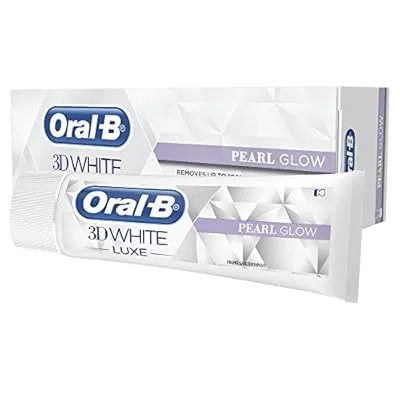
Maintaining excellent oral hygiene is crucial for preserving the results of your Oral-B whitening strips and ensuring overall oral health. Brush your teeth twice daily with a fluoride toothpaste, using a soft-bristled toothbrush to avoid damaging your enamel or irritating your gums. Floss at least once a day to remove plaque and food particles from between your teeth, where a toothbrush can’t reach. Consider using an interdental brush or water floss to further enhance your cleaning routine. Regularly use a fluoride mouthwash to strengthen your teeth and provide additional protection against decay. Choose a mouthwash that is alcohol-free to prevent dryness. Schedule regular dental check-ups and professional cleanings every six months. A dentist can remove any built-up plaque and tartar, which contribute to staining. Avoid smoking and other tobacco products, as they can cause significant discoloration of your teeth. By following these practices and maintaining a consistent oral hygiene routine, you can prolong the effects of teeth whitening and maintain a bright, healthy smile. Your dedication to oral hygiene will contribute to a confident and lasting smile.
Are Oral-B Whitening Strips Right for You?
Determining whether Oral-B whitening strips are right for you involves assessing your individual needs, oral health, and expectations. Consider the degree of whitening you desire. If you are looking for a subtle improvement, Oral-B strips may be a suitable option. However, if you are seeking more dramatic results, professional whitening treatments might be a better choice. Evaluate the current condition of your teeth. If you have sensitive teeth, receding gums, or existing dental work, it is essential to consult with your dentist before using whitening strips. If you have dental restorations such as fillings, crowns, or veneers, whitening strips will not whiten these areas. Consider the convenience and affordability of the treatment. Oral-B strips are a convenient, at-home option. However, you must be prepared to adhere to the application schedule and follow the instructions carefully. Be realistic about the expected results. While whitening strips can effectively lighten teeth, they may not remove all types of stains. Consulting your dentist to assess your suitability for whitening strips is always recommended. Your dentist can provide personalized advice and guidance based on your unique oral health situation.
Consulting with Your Dentist
Consulting with your dentist before using Oral-B whitening strips is highly recommended. Your dentist can assess your oral health and determine if whitening strips are suitable for you. They can identify any existing dental issues, such as cavities, gum disease, or sensitivity, which might affect the outcome of the treatment or lead to complications. Your dentist can also discuss your expectations and help you understand the potential results of whitening strips, as well as any limitations. They can provide personalized advice on the best whitening approach for your specific needs. Furthermore, your dentist can offer professional teeth cleaning, removing surface stains before your whitening treatment. They can also provide guidance on proper application techniques and aftercare to maximize your results and minimize potential side effects. During the consultation, your dentist can address any concerns you might have about the process and discuss potential alternative whitening options, such as professional whitening treatments. Their expert advice ensures that you make an informed decision and achieve the best possible results while maintaining your oral health. Scheduling a consultation with your dentist is an essential step in ensuring a safe, effective, and satisfying teeth whitening experience.
